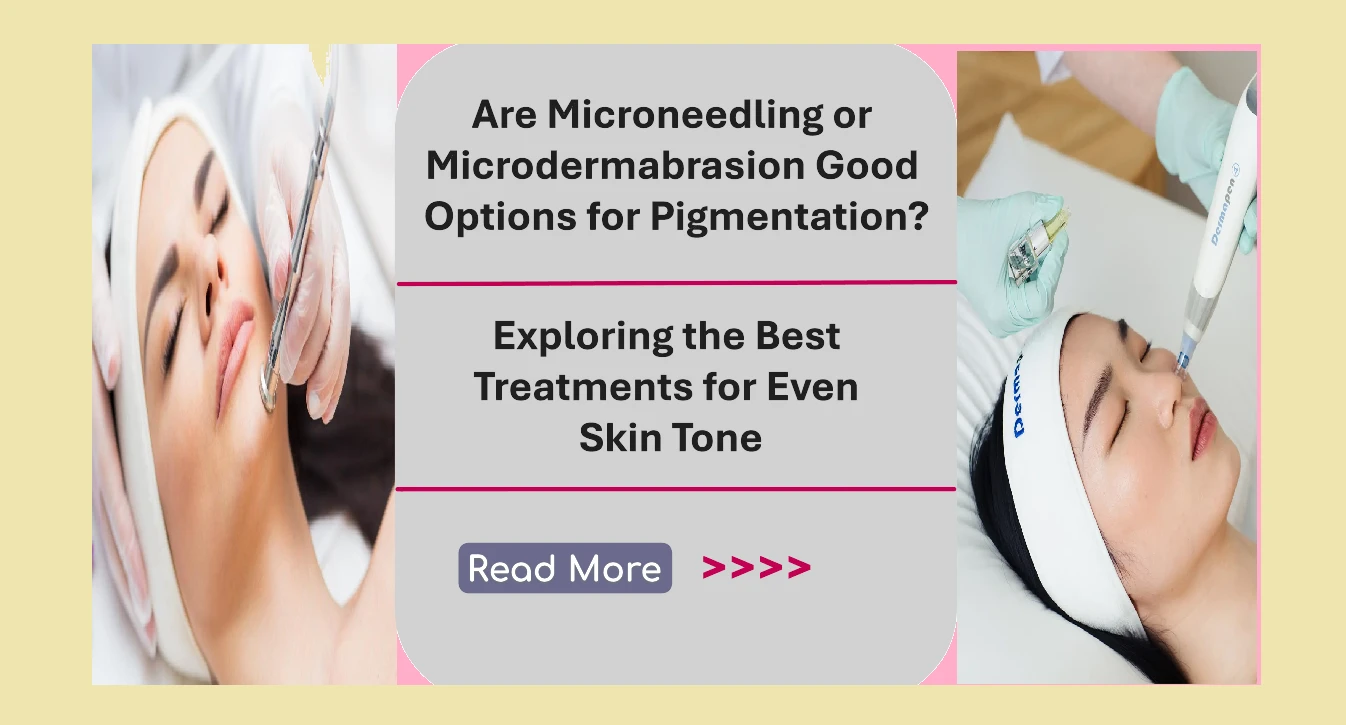Are Microneedling or Microdermabrasion Good Options for Pigmentation? Exploring the Best Treatments for Even Skin Tone
Are Microneedling or Microdermabrasion Good Options for Pigmentation? Exploring the Best Treatments for Even Skin Tone
Uneven skin tone and pigmentation are common concerns affecting people of all ages and skin types. From sunspots and melasma to post-inflammatory hyperpigmentation, these dark patches can impact confidence and make skin look older than it really is. Two popular in-office treatments often recommended by dermatologists to address pigmentation are microneedling and microdermabrasion. But are these treatments truly effective for reducing pigmentation and achieving an even skin tone? Let’s explore how they work, their benefits, and what you should know before choosing one.
Understanding Microneedling and Its Effect on Pigmentation
Microneedling, also known as collagen induction therapy, involves using a device fitted with fine needles to create tiny, controlled punctures in the top layer of the skin. These micro-injuries stimulate the body’s natural healing process, promoting collagen and elastin production. For pigmentation, microneedling works by accelerating skin turnover, which helps break up and fade dark spots over time.
One of the major advantages of microneedling is its versatility. It’s suitable for treating deeper pigmentation issues, including melasma and acne scars, especially when combined with topical serums like vitamin C, tranexamic acid, or kojic acid, which can penetrate more effectively after treatment. However, it should always be performed by a trained professional, as improper technique or at-home devices can worsen pigmentation, particularly in darker skin tones.
What About Microdermabrasion?
Microdermabrasion is a non-invasive exfoliation treatment that gently removes the outermost layer of dead skin cells using fine crystals or a diamond-tipped wand. By sloughing off this top layer, it can help fade mild surface-level pigmentation, improve skin texture, and give the skin a brighter, smoother appearance.
While microdermabrasion is generally safe and requires no downtime, its effects on pigmentation tend to be more modest compared to microneedling. It works best for superficial sunspots and uneven skin tone rather than deeper discoloration or melasma. Regular sessions, typically spaced a few weeks apart, are usually needed to see noticeable results.
Choosing the Right Treatment for Your Skin
Both microneedling and microdermabrasion can help improve pigmentation, but which option is better depends on the type and severity of your pigmentation, your skin type, and your treatment goals.
-
Microneedling: Better for deeper pigmentation, acne scars, and those looking to also address fine lines and overall skin rejuvenation. It carries a slightly higher risk of irritation, especially in sensitive skin, but offers more dramatic results.
-
Microdermabrasion: Ideal for mild, surface-level pigmentation and those wanting a quick, gentle refresh without significant downtime. It’s generally considered safer for sensitive or darker skin tones when done properly.
Key Takeaway
Both treatments can play a role in reducing pigmentation and promoting a more even skin tone. However, for lasting and safe results, it’s essential to consult with a dermatologist or licensed skincare professional. They can assess your skin’s unique needs and recommend a personalized treatment plan—sometimes combining microneedling or microdermabrasion with chemical peels, topical treatments, or laser therapy for the best outcome.
Always remember: consistent sun protection is crucial before, during, and after these treatments to prevent new pigmentation from forming and to maintain your results.

Related Blog
What Causes Oily Skin and Can It Be Managed Naturally? Exploring Root Causes and Gentle Solutions
Aug 2, 2025 by Admin
General
What Are the Signs That You Have Sensitive Skin? Key Symptoms to Help You Identify This Delicate Skin Type
Aug 1, 2025 by Admin
General